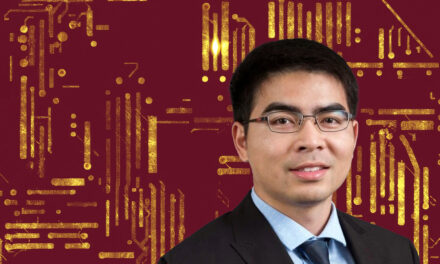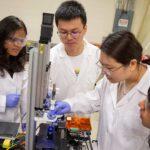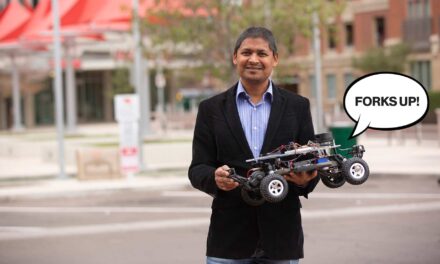
Putting people into the engineering equation
The Fulton Schools human systems engineering program shows field’s benefits for not only industry, transportation and defense, but education and social progress
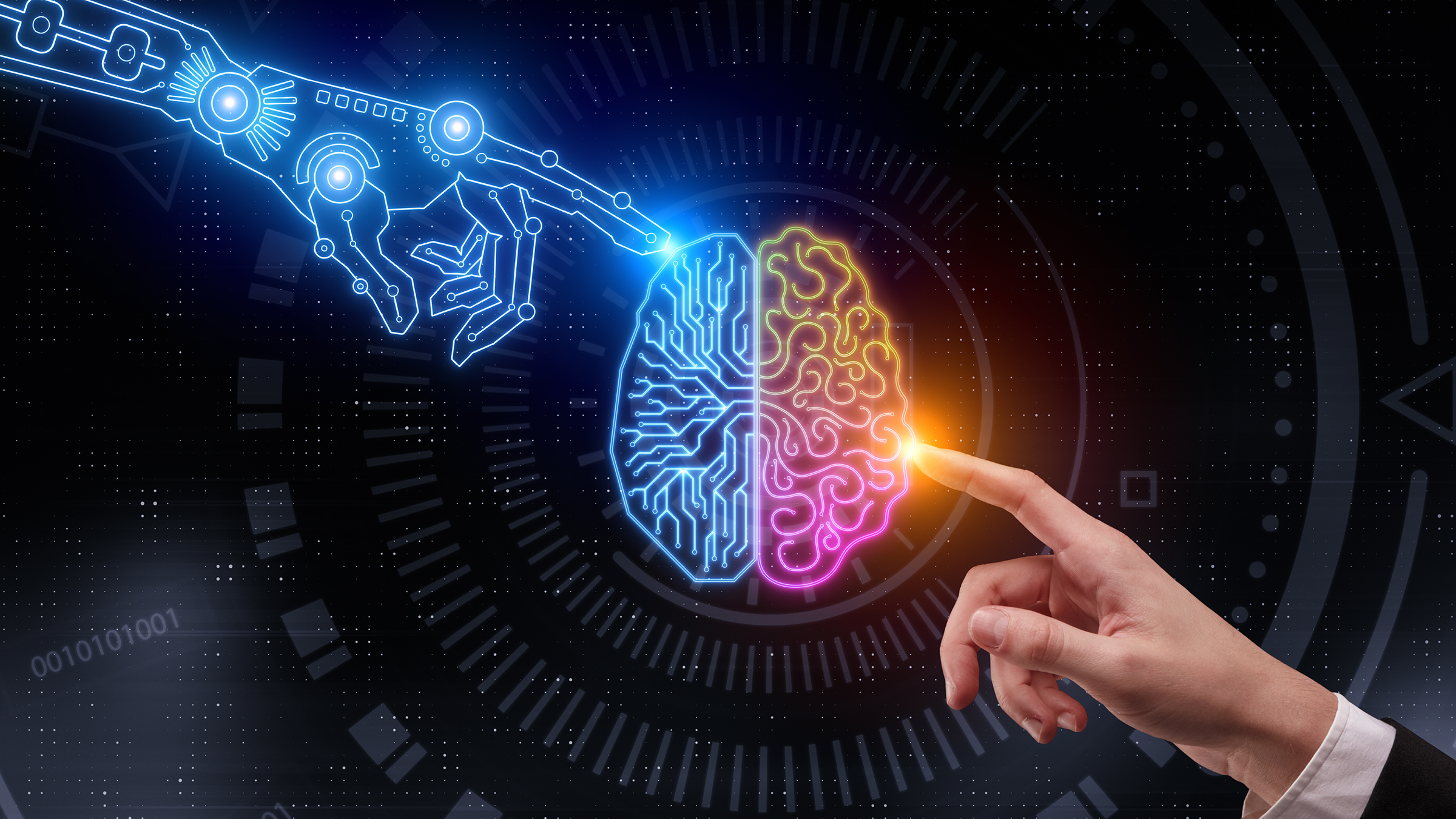
Above: Fulton Schools faculty are leading pursuit of research advances at the intersection of psychology and engineering to help ensure our increasingly technologized world maintains a human-centric perspective. Image courtesy of Shutterstock
National security involves increasingly sophisticated technologies, relying on the ever-advancing capabilities of artificial intelligence, robotics and autonomous systems to maintain vigilance against subterfuge and potential threats to public safety.
The effectiveness of these kinds of smart tech requires much more than old school manual machine control that consisted mainly of pushing buttons and pulling levers.
Today, especially in science, engineering and industry, people do not so much operate technology as they engage and collaborate with it through various complex forms of human-computer interactions and cyberspace connections, says Jamie Winterton the director of strategy for Arizona State University’s Global Security Initiative, or GSI, which she describes as a cross-disciplinary research interface to the U.S. Department of Defense and intelligence community.
What’s now essential to the success of national defense and many similarly critical security endeavors is establishing robust and reliable partnerships between humans and our high-tech tools.
Winterton says that’s why GSI’s most important collaborators include experts in improving our relationships with the powerful and interactive technologies we are creating — faculty members and researchers in the human systems engineering program in The Polytechnic School, one of the six Ira A. Fulton Schools of Engineering at ASU.
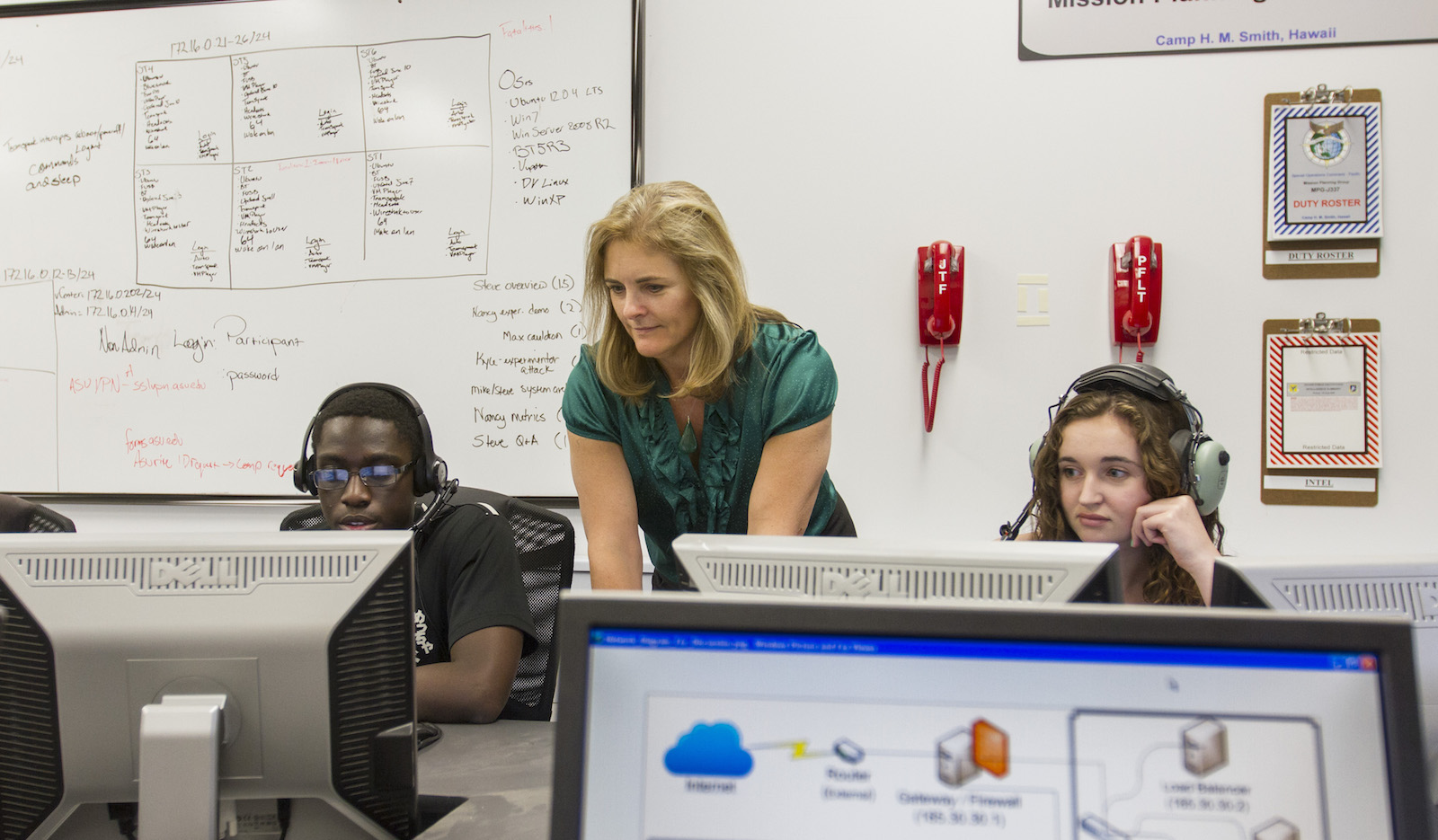
In the Cognitive Engineering Research on Team Tasks Lab, Professor Nancy Cooke (standing) guides students in human systems engineering studies focusing on team planning and decision making in such areas as cybersecurity, big data analytics, military operations and unmanned vehicles. Photographer: Jessica Hochreiter ASU
“There’s now a broad recognition that incorporating human-centric perspectives into developing technology is extremely important,” Winterton says, “especially if you’re using this technology for military or other defense operations.”
What that demands is melding the dynamics of human reasoning and perception with the workings of machine intelligence, combining the abilities of these different cognitive frameworks to solve challenges that neither may be able to do as creatively or productively by themselves.
Broadly and more simply, it involves working at the “intersection of psychology and engineering, and integrating people into the equation” when designing and deploying technology, says Nancy Cooke, a professor in the human systems engineering program.
Cooke is the program’s founding chair of graduate studies, serving in the role from 2011 until earlier this year. During that time, when The Polytechnic School became one of the Fulton Schools, she adapted an applied psychology master’s degree program and an applied cognitive science doctoral degree program into the Fulton Schools curriculum.
Seeing engineering through lens of psychology
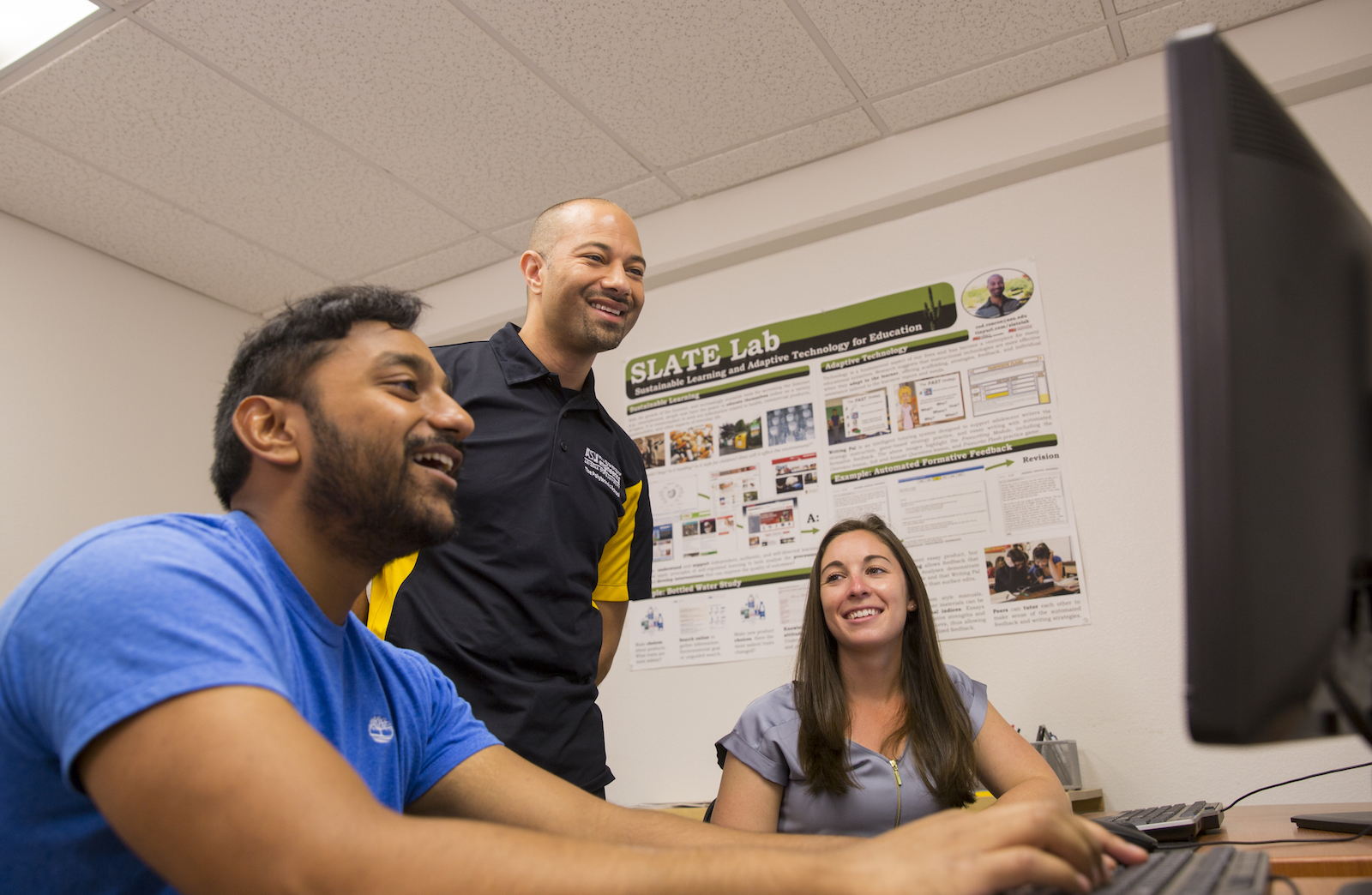
Associate Professor Rod Roscoe (standing) talks with students in his Sustainable Learning and Adaptive Technology for Education Lab. Research in the lab focuses on applying human systems engineering approaches to explore how computer-based tools can be designed and used to enhance learning, as well as to create new ways to learn.
Photographer Jessica Hochreiter/ASU
The human systems engineering field sprang in part from seeking solutions to basic technical problems, Cooke explains. One case involved airplane accidents during World War II that were the result of poor control systems. Industrial engineers and psychologists teamed up to address both the technical system design issues and the mental factors that were determining pilots’ actions.
Today, this branch of engineering has expanded its scope beyond a strictly technology-related focus. Cooke points, for example, to the recent book co-edited by two of the program’s faculty members, Associate Professor Rod Roscoe and Assistant Professor Erin Chiou, “Advancing Diversity, Inclusion, and Social Justice through Human Systems Engineering.” Cooke wrote the first chapter, “Human Systems Engineering for Societal Transformation: A Tale of Two Cities.”
The range of expertise among the faculty is also a distinctive feature of the program in the Fulton Schools.
“Almost all other human systems engineering and human factors programs are either in industrial engineering departments staffed by industrial engineers or are in psychology departments staffed by human factors psychologists,” Cooke says. “Most of our faculty are trained in cognitive science but we are in an engineering school. This creates unique opportunities to teach engineers about human capabilities and limitations and to collaborate on research with engineers, and we have been doing both.”
Roscoe says human system engineering has emerged from a “co-evolution of many fields,” which, as a result of that growth process, can offer to teach skills important for careers in many areas.
“Everything that is engineered is designed for people and by people. So the thoughts, feelings and behaviors of people are fundamental to every aspect of engineering,” Roscoe says. “Knowledge of psychology allows us to understand what people need to do, what they want to do, what mental processes and resources they possess, and how their tools and environments contribute to these factors.”
Engineering and design “require analysis, creativity, evaluation and critical thinking. Understanding those processes and how to improve them is psychology,” he says. “Likewise, engineers have their own goals and interests, biases and blind spots, and must interact with each other in teams. Understanding and optimizing these factors is also an aim of psychology.”
Chiou says the field is an ideal choice “if you are interested in what motivates people, because you get to study those motivations and then use that knowledge to make the world a better place.”
Providing a platform for education and training design
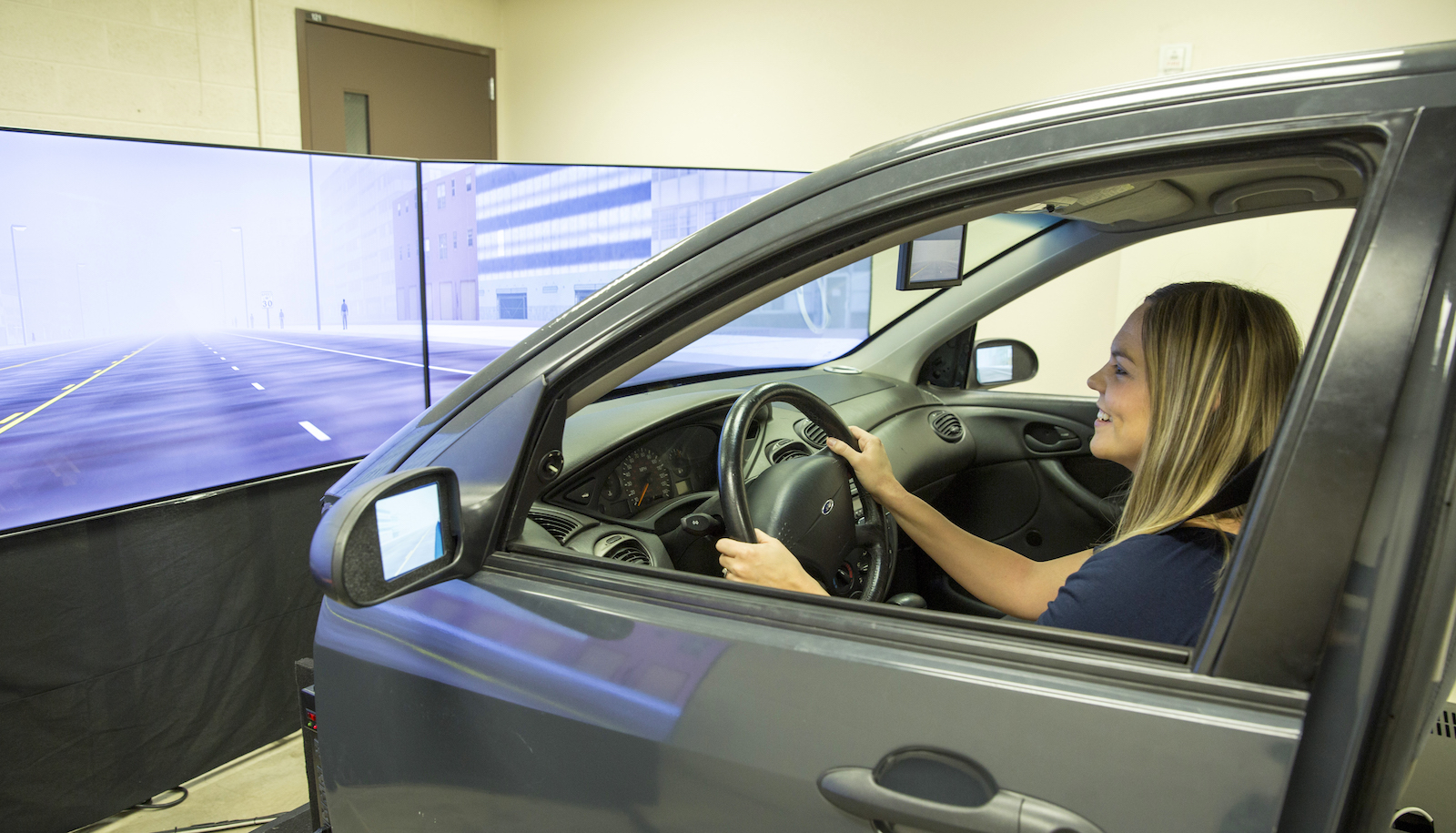
Using a large-scale driving simulator for user experience research in Associate Professor Rob Gray’s lab, Jaimie McNabb views various types of visual, auditory and tactile collision warnings that drivers can encounter in foggy conditions. Photo courtesy of Robert Gray
Associate Professor Rob Gray conducts research on perceptual-motor control with an emphasis on the demanding physical activity required in driving, aviation and sports — including designing effective sports training and driver safety training programs — with a focus on both the technology and the psychology involved in those pursuits.
That work reflects the growing potential for using human systems engineering to advance educational design by providing more effective approaches to both hands-on teaching and learning, says Gray, the program’s undergraduate studies chair.
The education focus in the program is set to expand. Mary Niemczyk, an associate professor in The Polytechnic School’s aviation program, will lead a new concentration in studies that apply human systems engineering principles to aviation.
Niemczyk says aviation encompasses all the fundamentals of human systems engineering — the full combination of technology, psychology, the design of safety training and technical education, along with the human and environmental interactions experienced during flight operations.
“Flying involves a very complex set of dynamics and variables. So many things are involved in trying to ensure a safe and efficient aviation system,” Niemczyk says. “We’re going to take a deep dive into all of it and it’s going to be valuable not only for students in the aviation programs but also for the aviation industry.”
More industries seeking expertise in the field
Human systems engineering courses are proving to be attractive to students majoring in other disciplines “because we bring in the human component that many students don’t get in other technology-oriented studies,” says Associate Professor Scotty Craig, the program’s current graduate studies chair.
Many of the nearly 75 students enrolled in the master’s and doctoral degree programs earned undergraduate degrees in other areas of engineering.
“We provide them the skills to apply the perspective of psychology to areas like robotics, and students are discovering this makes their work more intriguing, ” Craig says.
Graduate students are also finding that industries are increasingly interested in employing graduates who specialize in the understanding of how people and smart technologies can work together more proficiently.
Craig says many graduate students are getting summer internships that enable them to directly apply what they’re learning, and doctoral students typically get multiple callbacks for interviews after meeting industry representatives at job fairs.
Overall, the program’s enrollment in the bachelor’s, masters and doctoral degree programs has been increasing steadily over the past several years.
Widening range of real-world applications
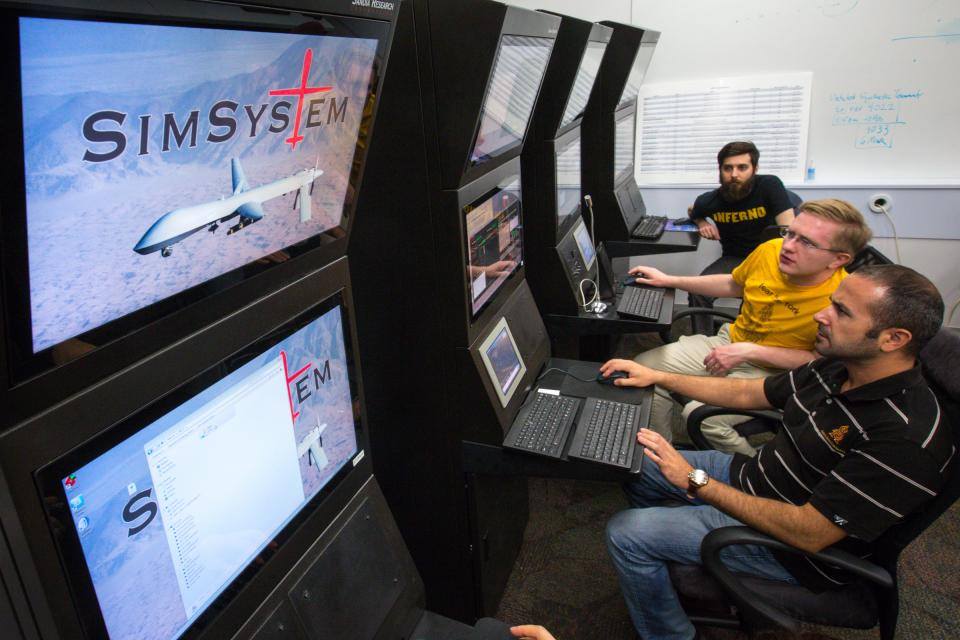
At an Unmanned Aerial System-Synthetic Task Environment experiment station, the performance of three students is monitored as they take on simulated roles as pilot, navigator and sensor operator to fly an unmanned aerial system on a series of virtual reconnaissance missions. Photo courtesy of the Fulton Schools human systems engineering program
Christopher Corral earned a master’s degree in applied psychology from ASU in 2014, then worked for five years with a human factors consulting firm. He then decided to return to pursue a doctoral degree in human systems engineering. Autonomous driving is his key area of interest and he saw that ASU’s human systems engineering program could further his professional aspirations in the field.
“One of the most interesting things I am learning is just how large of an impact a small misunderstanding of human factors can have,” Corral says. “More time, money and research go into products than most people realize, especially products that have the potential to be dangerous.”
As vehicle technology becomes more advanced, primarily with new autonomous driving features, he says, “a surprising amount of effort is needed to ensure these features are used correctly and safely, and it is absolutely fascinating to see the engineering ingenuity that goes into these devices.”
Corral sees his doctoral studies as a path to his goal of becoming a human factors and safety consultant.
“My research interests involve examining human driver behavior in highly automated vehicles,” he says, “and I plan to use the knowledge gained from this program and my eventual dissertation to consult on litigation cases involving vehicle automation failures or misuse.”
Prasanth Rajivan came to ASU to study computer science. He earned a master’s degree in computing studies in 2011. He also met Professor Cooke and worked with her on human factors experiments in cybersecurity, sparking his interest in human systems engineering. He then earned a doctoral degree in the field in 2014.
Today, Rajivan is an assistant professor at the University of Washington, where his research includes examining how human behavior affects information security and privacy, and developing ways to reduce the risk from cyberattacks and promoting safe behaviors online.
Rajivan says he continues to find the nature of the work he began at ASU fascinating, particularly because it breaks down the traditional barriers between many academic disciplines and research fields in technology and human behavior.
He says he would advise today’s students in the field to be unafraid to break the norms because that can often lead to creative and impactful ideas and solutions.
“Humans are the source and also the solution to many problems in our society,” Rajivan says. “So, there will not be a lack of problems for students in this program to solve for their entire careers.”
Critical thinking skills that foster innovation
Another ASU alum, Bryant Foster, agrees with the outlook on the growing need for human systems engineers. Foster is the vice president of human factors and user experience for Research Collective, a consulting company he co-founded.
Most of the company’s clients are in the health care field, an industry that Foster says recognizes the critical role of the human factors approach in developing new products and technology.
“If you don’t implement human systems engineering, if you’re not considering the characteristics of the users when you design products, then you run a risk of designing products that are difficult to use and possibly even unsafe,” Foster says, adding that the prospects for those entering the field “are very bright across many industries.”
In collaboration with the human systems engineering program, he co-founded a student mentorship program that is designed to introduce students to professionals in relevant roles in various industries. Foster says that approach gives individual students an idea of the expanding range of career possibilities in human systems engineering endeavors.
Doctoral student Glenn Lematta, for example, is working under Cooke on projects funded by the Department of Defense to explore possibilities for the design of future combat vehicles and uses of artificial intelligence systems.
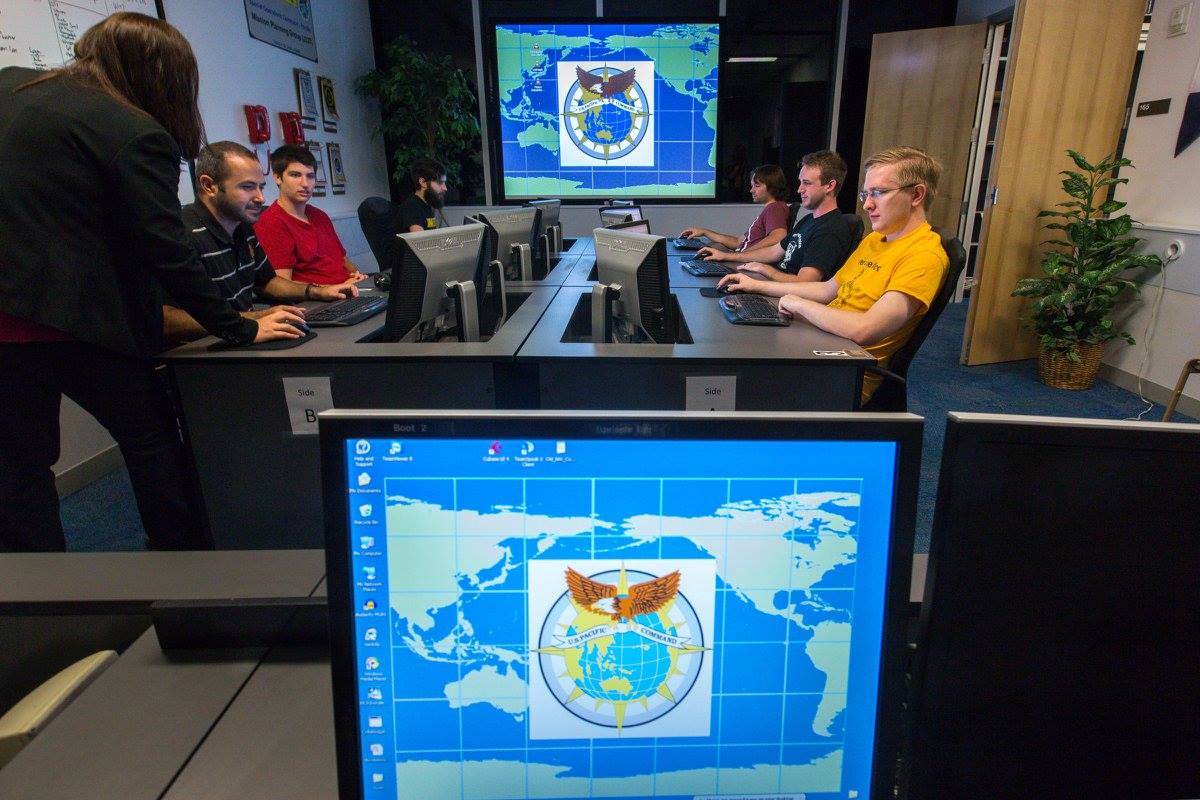
In a team decision-making lab exercise, a group of students engage in simulated scenarios involving military noncombatant evacuation operations, cybersecurity analysis and intelligence data analysis. Students then collect and evaluate data on team cognition and team performance. Photo courtesy of the Fulton Schools human systems engineering program
Lematta says his research and studies “teach you to think really critically about how people actually behave in different contexts and in different environments and specific situations,” all of which can be applied to leadership, management and technical roles in numerous industries.
Alexandra Wolff, who is close to completing her undergraduate studies in the field, hopes to work in aerospace, aviation or military-related research. But Wolff says she can look at the subject matter of just about every course she has taken and see possibilities for applications of human systems engineering.
At its core, the field is all about “how the human brain works and why people do the things that they do,” says Andrew Gin, who is pursuing a master’s degree. He sees expertise in that area opening the way to a variety of career choices.
“Human systems engineering is a perfect combination of things I’ve loved learning about,” says Margaret Wong, who is also working to earn a master’s degree. “I had not realized there is a field that really captures so many disciplines and is immediately useful and vital in our highly technologized world.”
She and other students say they’ve found their studies in the subject reveal how human factors studies relate to both the physical and social sciences, medicine, health care and even the arts and design.
A catalyst for engineering social progress
Earning a doctoral degree in engineering education and systems design and a master’s degree in human systems engineering at ASU is how Katreena Thomas is preparing to realize her aspirations to foster engineering that goes beyond what it can contribute to technological innovation.
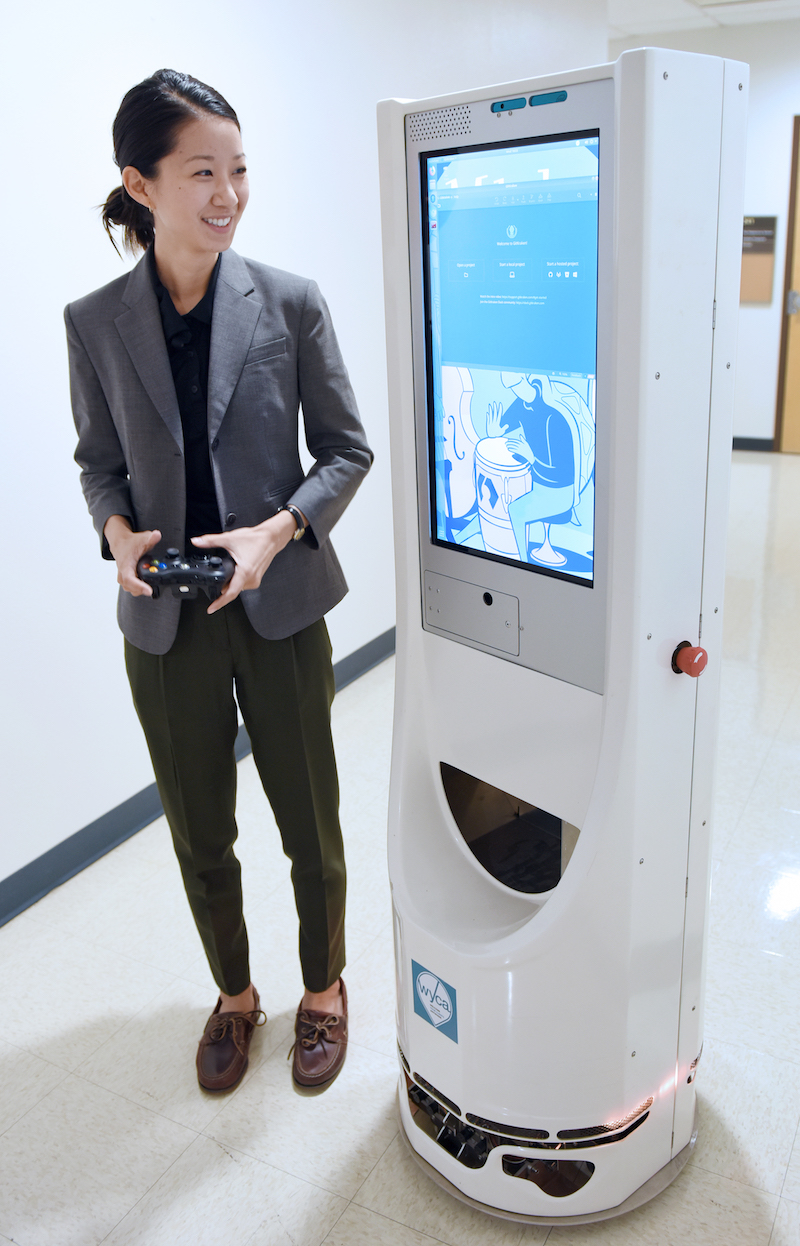
Erin Chiou, an assistant professor of human systems engineering, walks with a mobile robot prototype in the Simulator Building on ASU’s Polytechnic campus. The building houses laboratory space for the human systems engineering program, research involving aviation and ground transportation. Chiou studies human-automation interaction and technology integration in complex work environments. Photo courtesy of The Polytechnic School.
Thomas wants to help engineering culture evolve as a force for positive social change. Her goals focus on how to educate engineers to be cognizant of the impacts of their work from an ethical standpoint.
“Our responsibility as engineers is to serve society, and we have to ensure we are doing that in ways that don’t exclude some groups of people from its benefits,” Thomas says.
She sees the potential of human systems engineering to be a catalyst “for using our engineering powers for good,” to make inclusiveness, diversity and social unity integral to the profession’s value system.
Embedding social responsibility and ethics into the fabric of engineering is already central to the mission of ASU’s program, says Professor Cooke.
“Our main thrust is engineering that directly helps people and brings people together, and serves society,” not solely about advancing technologies for business, industry and government interests, Cooke says. “I think that is what is attracting more people to this field.”
Weighing human impacts of our tech advances
A major ASU research effort in which the program is involved illustrates that commitment to serving society, Cooke says.
The Center for Human, Artificial Intelligence, and Robot Teaming, or CHART, directed by Cooke and housed within ASU’s Global Security Initiative, advances projects to enable humans to effectively partner with highly advanced robots and “autonomous software agents” capable of independently making decisions and taking action. The goal is development of efficient and trustworthy “human-synthetic” teams that can be deployed on critical national security missions.
“This is not an artificial intelligence center and it’s not a robotics center,” says Winterton, strategy director for the initiative. “It’s about how you bring these things together in ways that ultimately do things that are beneficial for humans.”
Cooke emphasizes that CHART’s projects include research to address the ethical and legal issues that might arise as the technologies involved gain increasing autonomy.
“The world keeps getting more complex, and we are turning to technology for solutions to our biggest problems,” Cooke says. “So, I think it’s more crucial than ever to seriously weigh the psychological and social impacts of these technologies, and to prioritize human welfare in all of our science and engineering.”



